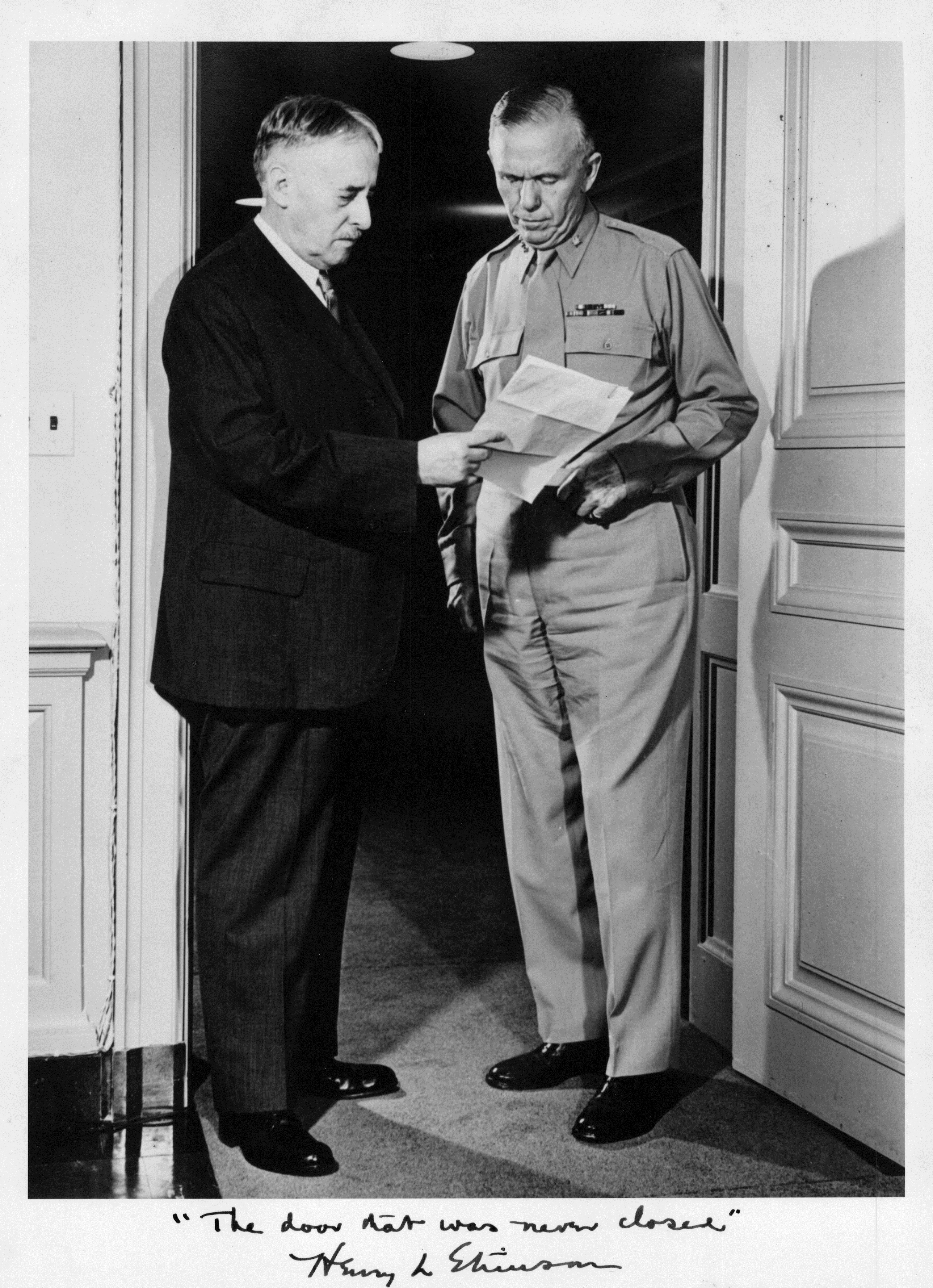Next Wednesday, October 4th, is #AskAnArchivist Day. This day-long event sponsored by the Society of American Archivists is an opportunity to ask questions (via Twitter) about any and all things archives and have them answered by archivists. The Marshall Library will be participating in the event, so be sure to send your archives questions to @georgecmarshall to learn more about the Marshall Library’s archives and its collections.
As a kick-off to next week’s #AskAnArchivist Day, the library staff invited fellow Marshall Museum employees to submit questions about the archives.
- What does an archivist do?
An archivist organizes and preserves documents, photographs, audio and visual materials, and artifacts, and makes them available for people to study either in person or online.
- Do you have collections other than George C. Marshall’s Papers?
Yes, the archives includes over 300 collections of papers from individuals who served with Marshall in the army and government. Some collections are from high ranking generals (Lucian Truscott, Walton Walker, James Van Fleet) and diplomats (William C. Foster, William D. Pawley) and reveal Marshall’s contributions to significant historic events. Other collections are from Marshall’s, assistant (Frank McCarthy), cook (Richard C. Wing), and orderly/chauffer (William J. Heffner) and include insights into Marshall’s personal life. The papers of the great American codebreakers William and Elizebeth Friedman are also contained in the archives.
- Is your entire collection digitized?
No, even though the archives in the Marshall Library is relatively small when compared to presidential libraries or the National Archives, less than 10% of the records have been digitized at this time. The library staff makes digitization of additional records a priority as time and resources allow.
- How do you decide whether something should be in the archives or in the museum’s collection storage?
As a general rule, the archives contains all of the two-dimensional and paper-based records, while the museum’s collection storage is where all of the three-dimensional artifacts and objects reside. Decisions about whether somethings belongs in the archives of the museum’s collections storage can sometimes be difficult when a person donates a collection that includes both papers and objects.
- What is the oldest item in the archives?
A land deed dated 1746 that belonged to the Smith family of August County, Virginia. It is part of the family/genealogical records found in the Smith-Crum Papers.
- If the building was on fire, what 5 things would you save?
- Marshall Plan speech
- Landing map for Omaha Beach on D-Day
- Nobel Peace Prize certificate
- WWI diary of Private Homer E. Simpson
- Photo of General Marshall and Secretary of War Stimson standing in the doorway between their two offices in the Pentagon inscribed “The door that was never closed,” and signed by Stimson.

Don’t miss this opportunity to have your questions about the Marshall Library’s archives answered as part of #AskAnArchivist Day on October 4th.
You can also submit questions to the Marshall Library staff at any time online.
If you like reading our blogs, please support us by becoming a member of the Foundation.
